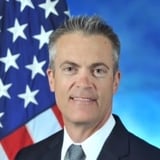Summary
Determining a staffing model for the success of your design teams is one of the key elements for driving success. By reviewing the differences between dedicated and agency (or flexible) staffing models, Alicia Mooty will walk the group through a case study of applying these types of models in her work at Adobe.
Key Insights
-
•
Dedicated staffing builds deep vertical expertise and stable relationships but limits cross-project learning.
-
•
Agency (pooled) staffing offers horizontal mastery and flexibility but requires more ramp-up time and risks shallow involvement.
-
•
Hybrid staffing models enable teams to flexibly cover critical design gaps without waiting for new hires.
-
•
Designer preferences vary: some value security of dedicated roles, others seek excitement in rotational assignments.
-
•
Clear, ongoing communication and stakeholder alignment are critical when shifting staffing models.
-
•
Design debt can accumulate if staffing shifts create under-supported teams with full product demands.
-
•
Workload splitting across multiple teams can lead to burnout and requires close oversight.
-
•
Funding models (centralized vs business unit–funded) strongly impact staffing flexibility and ownership disputes.
-
•
Early involvement of design in projects distinguishes true start from false start and improves outcomes.
-
•
Short-term agency assignments need clarity on long-term maintenance responsibilities to prevent workflow gaps.
Notable Quotes
"How do you organize a design team to work within a changing environment without freaking everybody out."
"Dedicated staffing creates deep vertical expertise, giving designers mastery and strong relationships."
"Agency style staffing gives designers horizontal mastery but doesn't always allow deep vertical mastery."
"One designer's security in dedicated roles can be another designer's stagnation."
"We covered critical gaps without waiting for headcount allocation or hiring delays."
"Creating trust and small group alignment before shifting staffing reduces resistance."
"Splitting designers across teams sometimes caused work-life balance issues requiring more oversight."
"Funding source often drives ownership tension about where designers are allocated."
"False starts happen when design is brought in too late, to fix rather than set vision and strategy."
"Agency model can feel like a fast-food assembly line if designers aren't involved early and meaningfully."
Or choose a question:















More Videos

"Don't be cool, be good—work hard at managing your teams because they need you to nail it."
Adam Cutler Karen Pascoe Ian Swinson Susan WorthmanDiscussion
June 8, 2016

"UX directors often feel like this poor person in the middle here getting pulled in all these directions."
Peter MerholzThe Trials and Tribulations of Directors of UX (Videoconference)
July 13, 2023

"If you haven’t designed who your teams are and who your players are, expecting people to comply with standards won’t work."
Lisa WelchmanCleaning Up Our Mess: Digital Governance for Designers
June 14, 2018

"Transportation must evolve to be more sustainable and accessible for all."
Vincent BrathwaiteOpener: Past, Present, and Future—Closing the Racial Divide in Design Teams
October 22, 2020

"If you get a perfect score on your OKRs, it means you didn’t set your sights high enough."
Brenna FallonLearning Over Outcomes
October 24, 2019

"Never be afraid to get into good trouble; start by asking why."
Tricia WangSpatial Collapse: Designing for Emergent Culture
January 8, 2024

"Diverging and converging around the business model canvas helped us test and prototype delivery methods for the value propositions."
Edgar Anzaldua MorenoUsing Research to Determine Unique Value Proposition
March 11, 2021
"Successful operations must have a well-laid-out and transparent process and documentation, but that process must become invisible in its application."
Designing Systems at Scale
November 7, 2018

"Design is the rendering of intent — bringing ideas into a form people can interact with to solve problems, as Jared Spool said."
Erin WeigelGet Your Whole Team Testing to Design for Impact
July 24, 2024
















